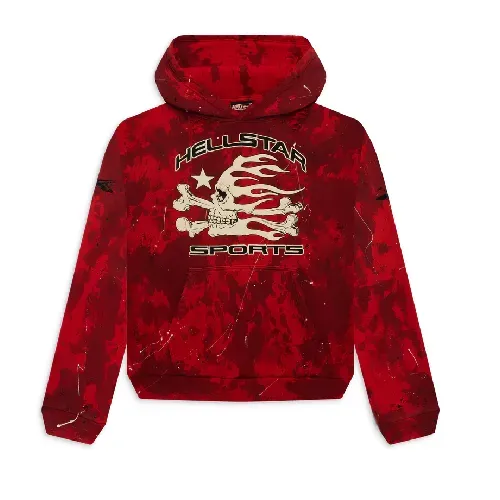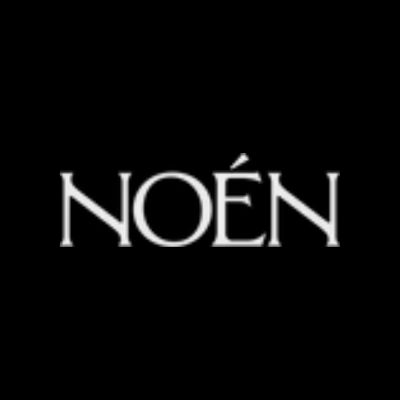
The Rise of a Cult Brand
In the fast-paced world of street fashion, trends flicker like candle flames—here today, forgotten tomorrow. But once in a while, a brand emerges that doesn’t just follow the flame but ignites one of its own. Hellstar Clothing is that kind of phenomenon—a brand that erupted onto the scene with unapologetic boldness, transforming the streetwear landscape through its unique blend of dystopian imagery, spiritual undertones, and cosmic energy. Hellstar isn’t just a name—it’s a statement, a symbol, and, for many, a lifestyle.
Founded by forward-thinking creatives from the vibrant and ever-evolving cultural scene of Los Angeles, Hellstar embodies the ethos of rebellion, introspection, and ascension. From the streets to the stages, it’s become a uniform for those who walk the line between darkness and enlightenment. Whether it’s the cryptic designs or the limited-release drops that vanish within minutes, Hellstar Clothing has mastered the alchemy of fashion and mystique.
A Philosophy in Fabric: The Meaning Behind the Flame
Hellstar Clothing isn’t just about graphics or hype—it’s a brand woven with symbolism. Its name alone evokes a cosmic contradiction: “Hell,” representing chaos, suffering, and inner turmoil, juxtaposed with “Star,” a celestial beacon, a source of light and direction. This duality permeates every piece in the collection, subtly asking the wearer to confront their inner paradoxes.
Rather than focusing on seasonal fashion or corporate-driven trends, Hellstar taps into deeper cultural and spiritual concepts. The imagery frequently references apocalyptic visions, celestial bodies, burning planets, and esoteric symbols—all hinting at transformation, destruction, and rebirth. It invites wearers to see themselves not just as consumers but as conscious beings navigating a chaotic universe.
There’s also a significant connection to themes of suffering and redemption. Many of Hellstar’s designs subtly speak to the battles of mental health, identity, and the search for purpose. In an era where authenticity is currency, this sincere reflection in design resonates deeply with a generation craving meaning beyond aesthetics.
From the Underground to the Spotlight
Hellstar’s journey from niche streetwear label to fashion phenomenon wasn’t an accident—it was a calculated storm. Its founders deliberately kept the brand under wraps in its early stages, only releasing small, cryptic collections. The result? A hunger in the streetwear community that grew exponentially with each drop. Limited-edition releases and elusive marketing cultivated a cult-like following, and soon, everyone wanted a piece of the flame.
Celebrity endorsements followed suit, though not in the traditional sense. Instead of PR-planned rollouts, Hellstar’s pieces started appearing organically on influential figures like Lil Uzi Vert, Playboi Carti, and Travis Scott—icons whose aesthetics already danced along the edge of dark and divine. These artists didn’t just wear Hellstar; they embodied it, reinforcing the brand’s image as a badge of identity rather than just apparel.
Social media also played a pivotal role. While many brands over-saturate feeds with ads, Hellstar focused on aesthetic-driven visuals and cryptic teasers, often accompanied by moody, post-apocalyptic visuals or introspective poetry. This artistic direction allowed fans to feel like part of a larger narrative—one where they weren’t just buying clothing but participating in a story.
Signature Pieces: More Than Just Streetwear
Hellstar’s catalog is diverse, but several pieces stand out as icons in the brand’s legacy. The Hellstar Hoodie, for example, has become a flagship item. With oversized fits, hauntingly detailed back graphics, and subtle nods to spiritual warfare, it’s more than a hoodie—it’s armor. Similarly, Hellstar’s graphic tees often feature depictions of celestial bodies, crying angels, and fiery scripts, pushing the boundaries of what streetwear visuals can convey.
The brand also experiments with textures and materials. Distressed cotton, faded washes, heavy embroidery, and glow-in-the-dark ink are just a few techniques that elevate their designs from simple wearables to statement pieces. These aren’t just clothes meant to be worn; they’re meant to be felt, contemplated, and remembered.
Hellstar’s use of color is equally striking. Instead of relying solely on blacks and reds—common in darker streetwear—they play with deep purples, midnight blues, and burnt oranges, adding layers of emotional complexity to each piece. Even the typography used—often resembling ancient scripts or burning calligraphy—evokes a sense of mystery and depth.
The Power of Scarcity: Limited Drops and Cultural Impact
In the world of modern fashion, scarcity drives desire—and Hellstar has mastered this game. Drops are infrequent, rarely announced in advance, and often sold out within minutes. This deliberate strategy not only increases demand but also preserves the brand’s identity as something rare and treasured. Wearing Hellstar becomes a signal—not just of taste, but of being “in the know.”
Each drop is an event. Fans and collectors stay glued to social media for hints, with entire subreddits and Discord communities dedicated to tracking release dates and discussing the meaning behind each design. This level of devotion mirrors the frenzy once reserved for brands like Supreme in its heyday or early Off-White under Virgil Abloh. But what sets Hellstar apart is its resistance to going fully mainstream. Even as the brand’s popularity surges, it continues to maintain a sense of mystique, avoiding overproduction or commercial overexposure.
This controlled visibility makes Hellstar not just a brand, but a cultural phenomenon—an underground gospel spread by word of mouth, worn by those who see fashion as more than vanity, but as expression.
Beyond Fashion: A Movement and a Message
What truly cements Hellstar’s position in streetwear history is its mission. Behind the fire-and-brimstone imagery lies a brand that champions introspection, mental health awareness, and the power of transformation. Many drops are accompanied by cryptic mantras or poetic verses hinting at personal struggle, rebirth, or cosmic journeying.
This spiritual undertone resonates with a generation grappling with uncertainty, trauma, and identity in a world that often feels chaotic and disjointed. Hellstar doesn’t offer answers, but it offers solidarity—a shared language for those navigating their own fires. It asks its wearers to reflect, to transform, and to rise from their ashes.
In this way, Hellstar Clothing is less a fashion label and more a movement—a call to awareness wrapped in cotton and ink.
The Future of Hellstar: Ascending Without Selling Out
As Hellstar Shorts continues to expand its reach, the natural question arises: Can a brand maintain its soul in the face of commercial success? Thus far, the answer appears to be yes. Unlike many streetwear labels that dilute their identity as they grow, Hellstar remains fiercely committed to its original ethos. Instead of chasing mass-market appeal, it continues to innovate artistically and philosophically, forging its own path.
Collaborations remain rare and intentional. When they happen, it’s not about slapping logos together but creating something new and meaningful. There’s a sense that every decision, every stitch, serves the larger narrative Hellstar is telling—a story of darkness, light, chaos, and rebirth.
There are whispers of expansion into more premium lines, limited-edition collectibles, and even immersive art installations. If these plans unfold, Hellstar could transcend clothing entirely, becoming a multi-sensory cultural force—part gallery, part fashion house, part philosophical experiment.
Why Hellstar Matters
In a world oversaturated with brands screaming for attention, Hellstar succeeds by whispering. It doesn’t sell to you—it calls to you. And for those who answer, it offers more than fashion; it offers a mirror. A mirror that reflects our struggles, dreams, fears, and flames.
It matters because it challenges the norms. It fuses street culture with spirituality, pain with beauty, and chaos with cosmos. It matters because it dares to say that suffering isn’t something to hide, but something to transform. That fashion can be more than flex—it can be philosophy.
And most of all, Hellstar matters because it invites us to become more than just wearers of clothes, but seekers of meaning in the material world.




